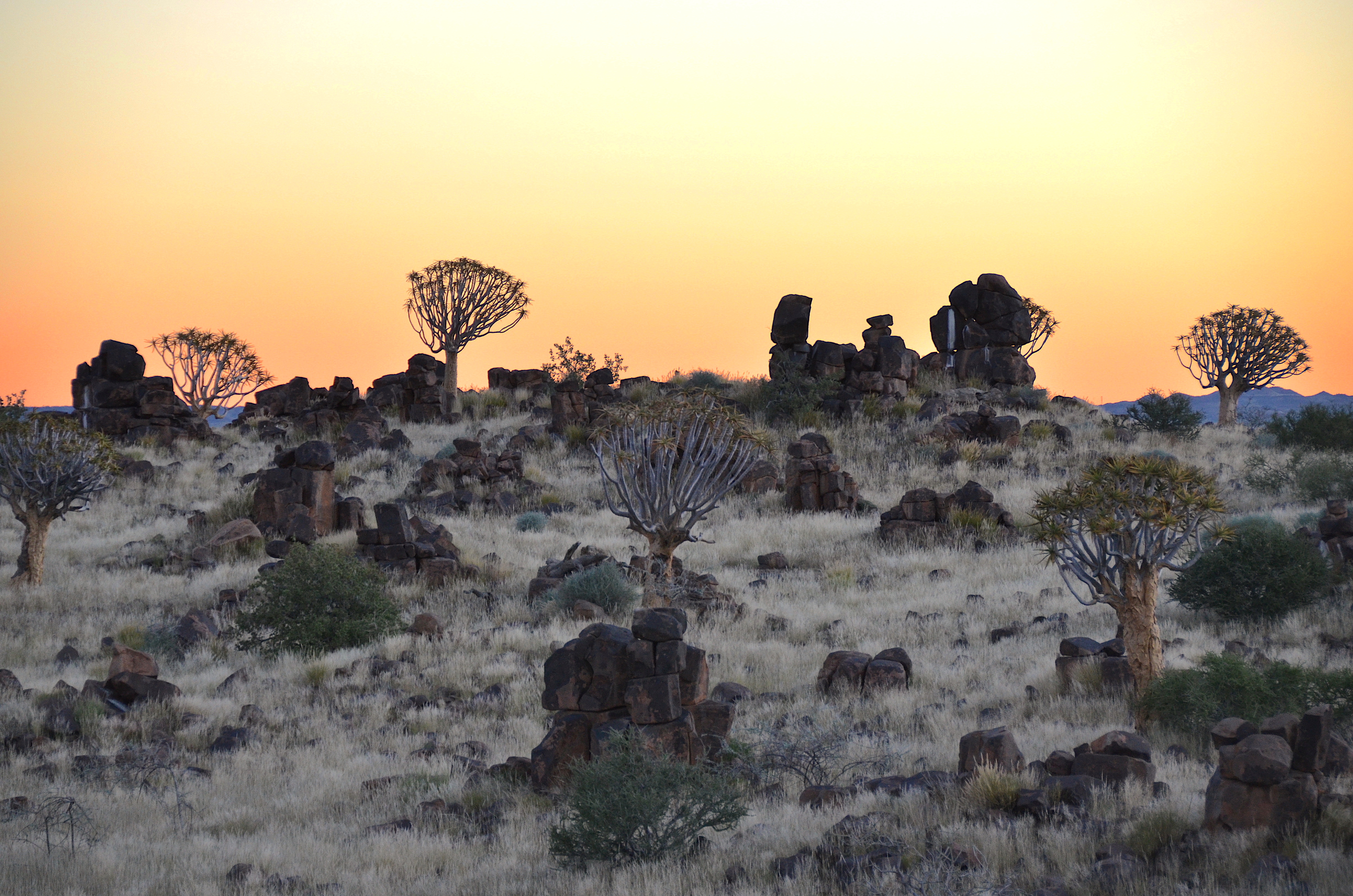Quiver Tree Forest on:
[Wikipedia]
[Google]
[Amazon]

 The Quiver Tree Forest (Kokerboom Woud in
The Quiver Tree Forest (Kokerboom Woud in
The web site of the Quiver Tree Forest Rest Camp
Geography of ǁKaras Region National Monuments of Namibia {{namibia-geo-stub
 The Quiver Tree Forest (Kokerboom Woud in
The Quiver Tree Forest (Kokerboom Woud in Afrikaans
Afrikaans (, ) is a West Germanic language that evolved in the Dutch Cape Colony from the Dutch vernacular of Holland proper (i.e., the Hollandic dialect) used by Dutch, French, and German settlers and their enslaved people. Afrikaans gra ...
) is a forest and tourist
Tourism is travel for pleasure or business; also the theory and practice of touring (disambiguation), touring, the business of attracting, accommodating, and entertaining tourists, and the business of operating tour (disambiguation), tours. Th ...
attraction of southern Namibia
Namibia (, ), officially the Republic of Namibia, is a country in Southern Africa. Its western border is the Atlantic Ocean. It shares land borders with Zambia and Angola to the north, Botswana to the east and South Africa to the south and ea ...
. It is located about 14 km north-east of Keetmanshoop, on the road to Koës
Koës is a village in the ǁKaras Region of south-eastern Namibia. It is situated on the edge of the Kalahari desert and belongs to the Keetmanshoop Rural electoral constituency. The average annual rainfall is about 150-200 mm.
Economy and in ...
, on the Gariganus farm. It comprises about 250 specimens of ''Aloidendron dichotomum
''Aloidendron dichotomum'', formerly ''Aloe dichotoma'', the quiver tree or kokerboom, is a tall, branching species of succulent plant, indigenous to Southern Africa, specifically in the Northern Cape province of South Africa, and parts of Sou ...
'', a species
In biology, a species is the basic unit of classification and a taxonomic rank of an organism, as well as a unit of biodiversity. A species is often defined as the largest group of organisms in which any two individuals of the appropriate s ...
that is also locally known as the quiver tree (Afrikaans
Afrikaans (, ) is a West Germanic language that evolved in the Dutch Cape Colony from the Dutch vernacular of Holland proper (i.e., the Hollandic dialect) used by Dutch, French, and German settlers and their enslaved people. Afrikaans gra ...
: ''kokerboom'') because San people
The San peoples (also Saan), or Bushmen, are members of various Khoe, Tuu, or Kxʼa-speaking indigenous hunter-gatherer cultures that are the first cultures of Southern Africa, and whose territories span Botswana, Namibia, Angola, Zambia ...
traditionally used its branches to make quiver
A quiver is a container for holding arrows, bolts, ammo, projectiles, darts, or javelins. It can be carried on an archer's body, the bow, or the ground, depending on the type of shooting and the archer's personal preference. Quivers were trad ...
s. The forest is spontaneous; the tallest quiver trees are two to three centuries old. The forest was declared a national monument of Namibia in 1995.
The quiver tree is also known for looking upside down because the "leaves" look somewhat similar to roots. This tree has a long history of beliefs that it will bring good luck to anybody that worships a tree and nurtures it. Since diamonds are very rich in Namibia, people say that if one of these trees is dug up, one will get diamonds in their lifetime, but since these trees are blessed nobody wants to dig them up.
Near the forest, there is another site of natural interest (itself a tourist attraction) for its geology, the Giant's Playground, a vast pile of large dolerite
Diabase (), also called dolerite () or microgabbro,
is a mafic, holocrystalline, subvolcanic rock equivalent to volcanic basalt or plutonic gabbro. Diabase dikes and sills are typically shallow intrusive bodies and often exhibit fine-grain ...
rocks.
Ecology
The Quiver Tree Forest holds tremendous ecological value within its native landscape. Bright yellow flowers bloom from June to July, when a huge variety of insects, birds, and mammals are drawn to the abundant nectar.Fauna
The forest is home torock hyraxes
The rock hyrax (; ''Procavia capensis''), also called dassie, Cape hyrax, rock rabbit, and (in the King James Bible) coney, is a medium-sized terrestrial mammal native to Africa and the Middle East. Commonly referred to in South Africa as the das ...
living amongst the rocks.
Other Quiver Tree Forests
Although ''Aloe dichotoma'' is common in southern Africa, there are only a small number of quiver tree forests proper. Most have been created by men; one of them is found in theKaroo National Botanical Garden
The Karoo ( ; from the Afrikaans borrowing of the South Khoekhoe !Orakobab or Khoemana word ''ǃ’Aukarob'' "Hardveld") is a semi-desert natural region of South Africa. No exact definition of what constitutes the Karoo is available, so its ext ...
of Worcester, South Africa
Worcester ( ) is a town in the Western Cape, South Africa. It is located north-east of Cape Town on the N1 highway north to Johannesburg.
Being the largest town in the Western Cape's interior region, it serves as the administrative capital o ...
.
References
External links
The web site of the Quiver Tree Forest Rest Camp
Geography of ǁKaras Region National Monuments of Namibia {{namibia-geo-stub